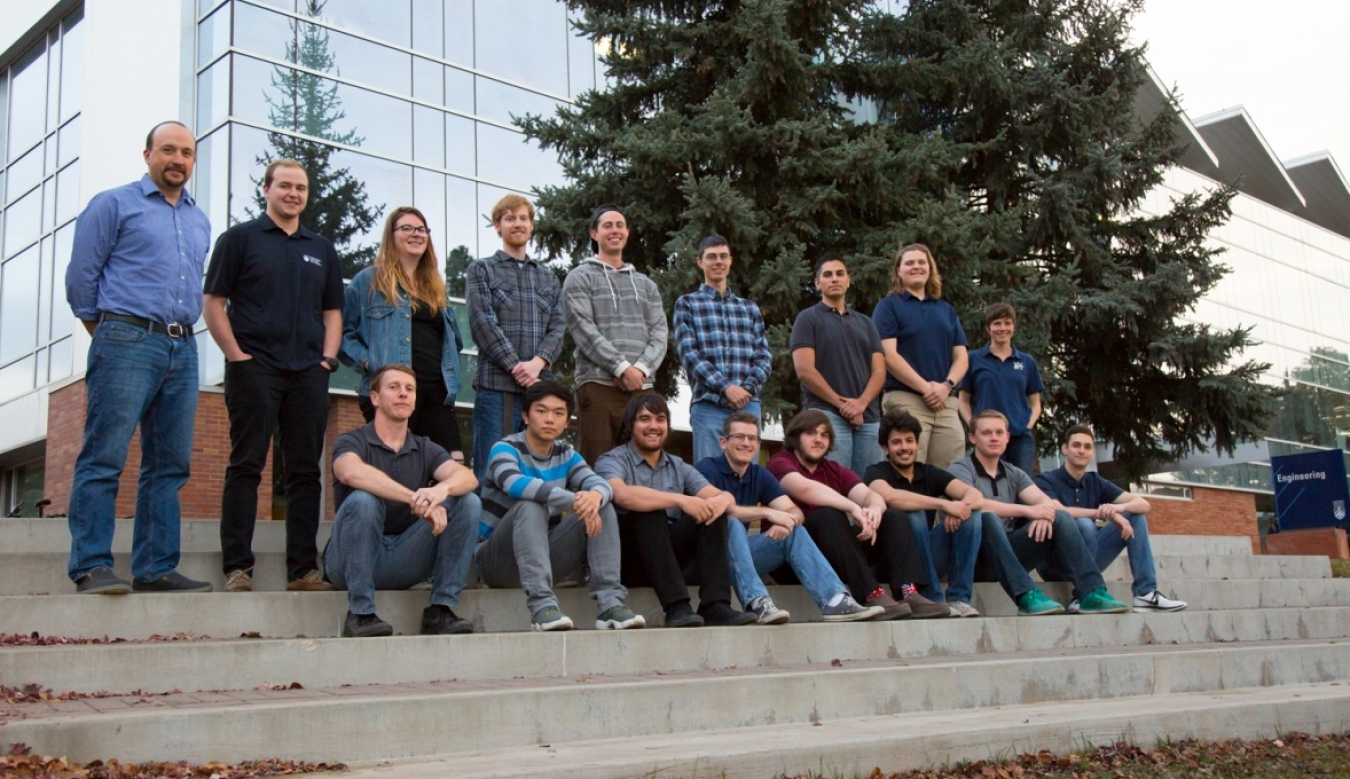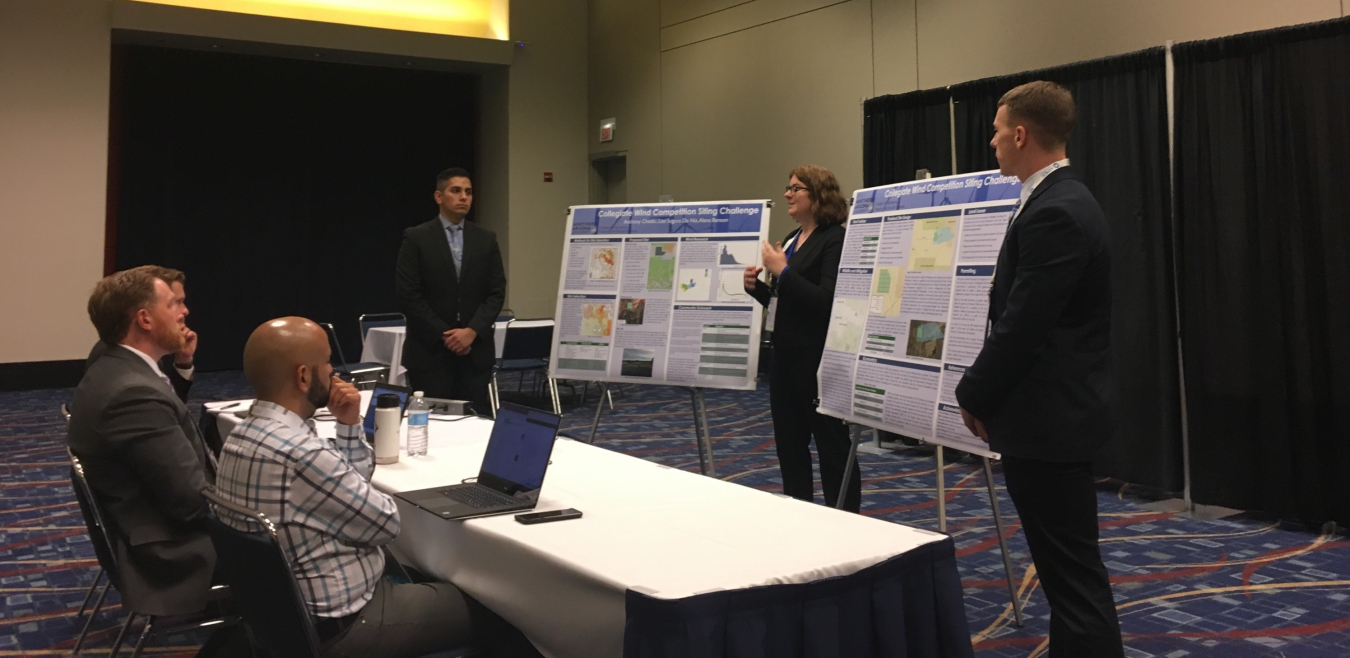When Alana Benson decided to participate in the U.S. Department of Energy’s 2018 Collegiate Wind Competition (CWC), she was only looking to complete her senior capstone project. She had no idea it would be the reason she got a job after graduating.
CWC challenges interdisciplinary teams of undergraduate students from a variety of programs to offer unique solutions to complex industry issues and teaches them a fundamental understanding of wind energy along the way.
Benson, a 2018 mechanical engineering Northern Arizona University graduate, was interested in wind power, but not necessarily in building a wind turbine. As a student, she attended a few meetings to learn more about the competition and found it offers the opportunity to explore other aspects of wind energy.
The competition includes two multi-faceted challenges for students: design, build, and test a wind turbine; and plan and financially analyze a wind plant. These two aspects of the competition require entirely different skill sets, so teams must include students from a variety of backgrounds.
Benson chose to work with business students on the planning and financial analysis contest, which challenged the teams to assess wind development opportunities within their region and draft a development plan.

The 2018 Northern Arizona University Collegiate Wind Competition Team.
Benson now works as a renewable energy analyst at AWS Truepower, a UL Company that helps stakeholders plan, design, finance, build, invest, maintain, and manage wind projects. Benson credits her experience in CWC with easing her transition from college to career.
I feel extremely lucky. It was participation in the siting challenge that really got me my job. I learned about all the different considerations when putting a wind farm in the ground. Everything from resource assessment, which is what I work on now, to environmental factors, to working with the community—it was so fascinating and important to learn.

Benson and her teammates at the Collegiate Wind Competition 2018, presenting their results from the siting challenge. Photo by Karin Wadsack, Northern Arizona University.
Benson found the things she learned in the competition useful not just for getting her job, but also for performing in her new job. As with any new position, there was a learning curve, but CWC gave her foundational knowledge of the wind industry—including wind resource assessment, environmental considerations, and curtailment strategies—that she continues to build on.
Karin Wadsack, a project director and Alana’s advisor at Northern Arizona University, knows how valuable CWC can be for students. She wrote the initial proposal that began the university’s participation in the competition and has served as one of the principal investigators for several teams from Northern Arizona University. She is serving as a technical advisor for this year’s team. She is also the co-chair of the Arizona chapter of Women of Renewable Industries and Sustainable Energy, and even prior to holding this position, one of her goals has always been to get more female students involved.
“I think the different elements of this competition open students’ minds to the variety of opportunities in the field. That’s one reason it’s attractive for female students and for students from different areas of study, whether it’s engineering, political science, or business,” said Wadsack. “They don’t have to be the person designing the blade.”
Wadsack was thrilled to learn that the CWC contributed to Benson’s job search success. She found her own experience of job hunting after graduation to be more difficult and frustrating than she anticipated and was glad to see how quickly Benson was able to get started.
Wadsack is continuing to support efforts like CWC to help prepare graduates for the working world and ease their entry into the tough job market. Challenging competitions like CWC push students toward their potential, help them build fundamental knowledge, and stand out as they pursue careers in the wind industry.
